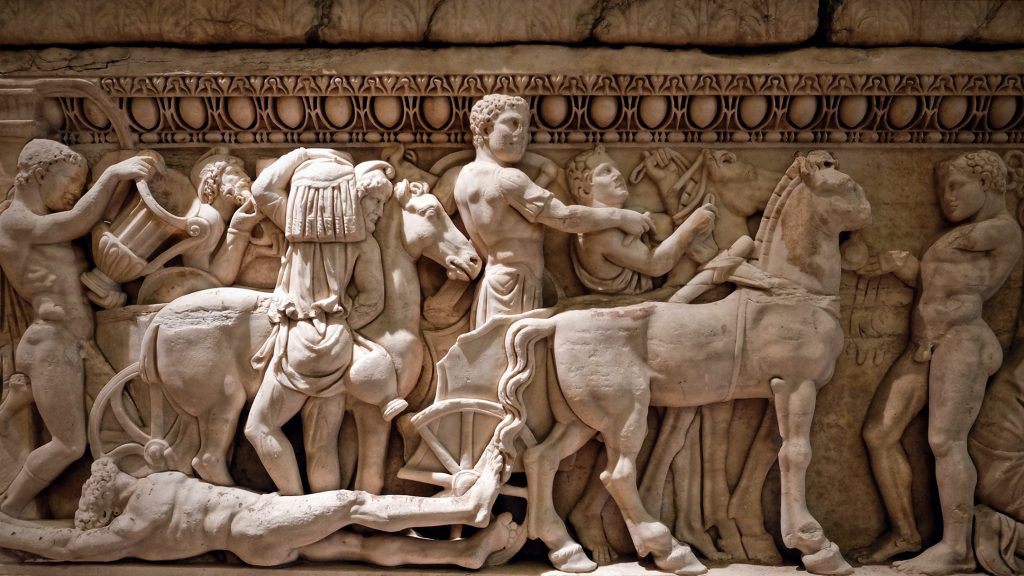With a burgeoning cultural scene, several recently opened venues and a raft of projects still to come, Beirut is fast transforming into the museum hub of the Middle East.
The clichés about Beirut go that it’s the Middle East’s party town, a city in which to sunbathe and shop by day and hit the clubs by night. While all those pastimes are certainly possible, Lebanon’s capital is far more than a one-stop-shop for hedonism – it’s also a beacon of history and culture. In recent years, Beirut’s art and museum scene has rapidly expanded and diversified. New venues and institutions have been opening every few months and still more are scheduled to be completed in the coming few years, most of them the result of dedicated work by NGOs or private individuals with a passion for art and heritage.
Beirut is steeped in ancient history, having been called home by successive civilisations stretching back more than 5000 years. At the National Museum of Beirut, artefacts collected from all over the country reveal the traditions, rituals and lifestyles of civilisations stretching from pre-history, through the Phoenicians, Romans and Crusaders to the Ottoman period. After being closed for 40 years due to the Lebanese Civil War, the museum’s basement re-opened to the public in 2016, featuring a stunning collection of funerary art, including a large collection of beautiful white marble sarcophagi. Dating back to the Phoenician period, between the sixth and the fourth century BC, they resemble mummy cases. Each has a unique carved face, thought to represent the person entombed within.
Also recently reopened after a seven-year closure and renovations costing more than $10 million, the Sursock Museum is a must-see both for architecture and art lovers. Located in Achrafieh, just up the stairs from Gemmayzeh, it is housed in a stunning mansion built in 1912, which integrates Venetian and Ottoman elements and includes a traditional “Salon Arabe,” a gathering space lined with gorgeous panels of hand-carved wood. The top two floors house the museum’s permanent collection, featuring work by Lebanese modern and contemporary artists. The first floor and the enormous below-ground exhibition spaces hold regular temporary exhibitions reflecting on everything from Beirut’s shifting urban fabric, to ecology, to sleep and dreaming.
Another must-visit site is Beit Beirut, a new museum located on the former frontline separating East and West Beirut during the 1975-1990 civil war. This unusual museum is located in a beautiful sandstone villa built in 1924, which was occupied by snipers and transformed into a war machine during the conflict. The building has been restored in such a way that all the damage done during the war is preserved. The façade is pockmarked with bullet holes and metal struts reinforce holes made by shelling. Inside, the ceilings are scorched black and walls of sandbags reveal how the snipers sheltered as they took aim at the streets outside through small embrasures. As yet, the museum has no regular opening hours but it’s hosting a series of temporary exhibitions linked to Beirut and its history and identity. Its well worth walking by, whether or not the inside is open, as the building itself is a beautiful and tragic site, a reminder of Beirut’s complex history and its ability to withstand seemingly anything.
Lebanon’s capital is far more than a one-stop-shop for hedonism – it’s also a beacon of history and culture.
Located on the campus of Saint Joseph Univeristy, between Beit Beirut and the Beirut National Museum, lies the Mim Mineral Museum, a hidden repository of precious and semi-precious gemstones from all over the world. Its impressive assortment will thrill anyone with an interest in geology, but even if rocks don’t rock your world it’s worth a visit for the sheer beauty of the collection.
—
Wondering where to stay in Beirut? Take a look at Baffa House, La Maison Rayes and Zanzoun, our Family Members in the Lebanese capital.
—
In the next few years, second archaeological museum is due to open in Downtown Beirut, close to Martyr’s Square. Designed by Renzo Piano, it will include a state-of-the-art building and a large garden, containing the remains of the Phoenician port, which was excavated some years back. In the meantime, it’s worth exploring the site anyway, as the ruins are uncovered and open for all to see.
Finally, Beirutis are eagerly awaiting the 2020 opening of the Beirut Museum of Art, to be located in a new building close to the Mim Museum. Focusing on modern and contemporary art from Lebanon and the Middle East, BeMA will be Lebanon’s first comprehensive art museum and with impressive facilities, a wide-ranging programme of exhibitions, workshops and events and a leafy garden, it is set to become the new centre for creativity and cross-cultural dialogue in the country.
Clubbing and sunbathing aside, Beirut’s museums are booming and its future is bright.

